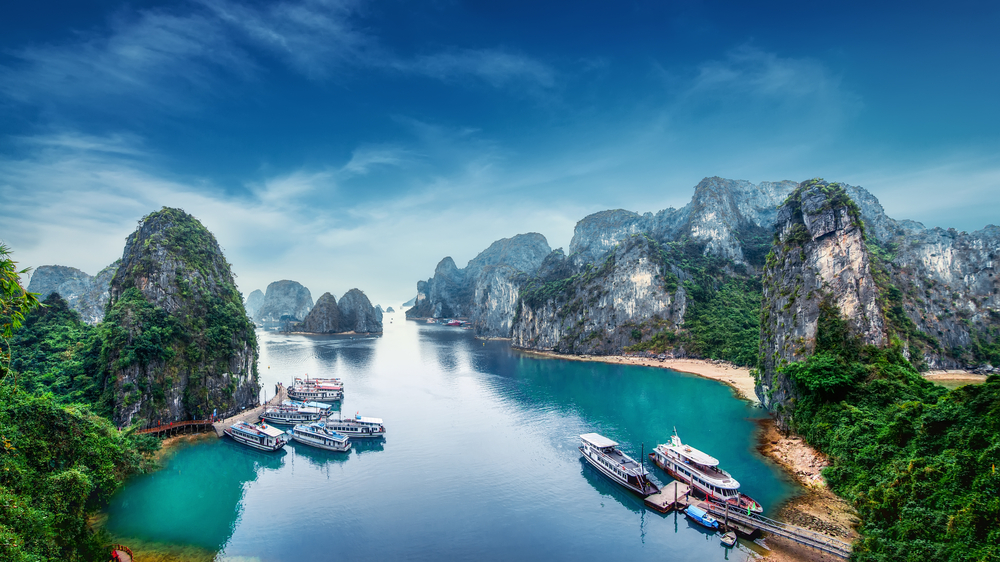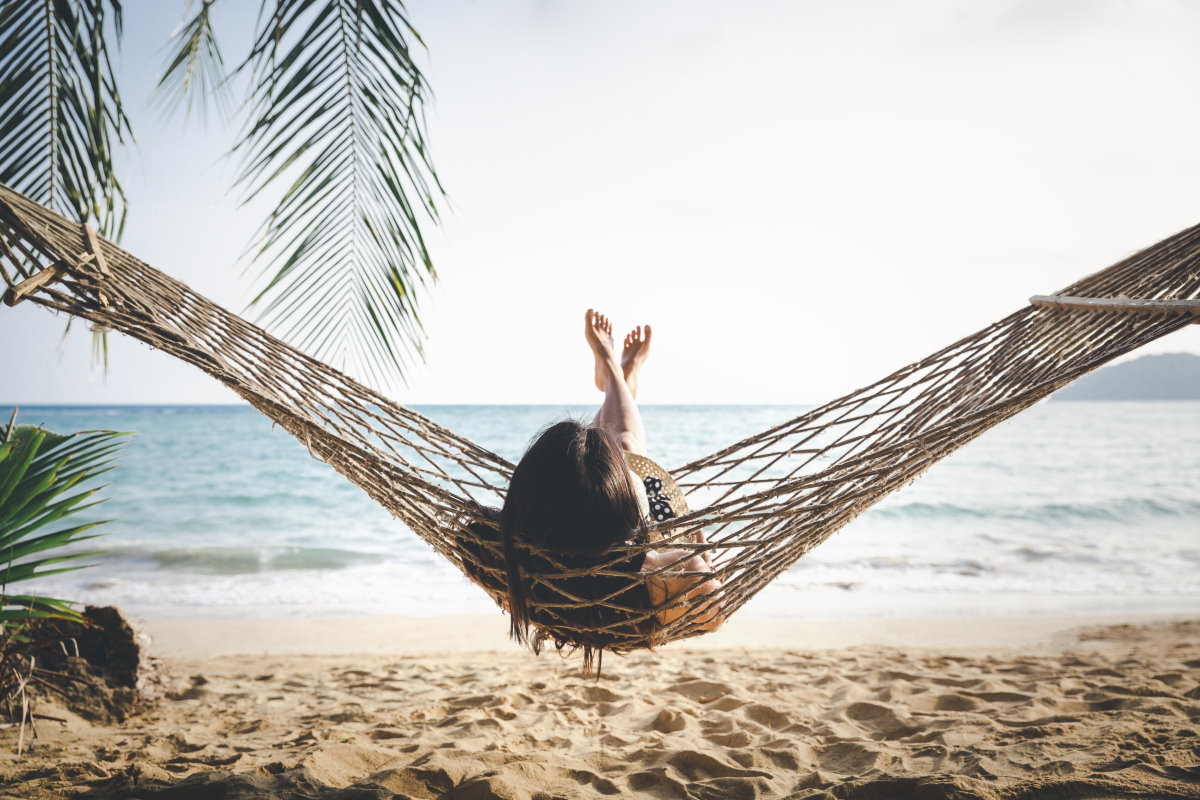Be intentional about where you travel in 2023, and use these tips to select the destination of your dreams!
2023 is just around the corner (update: It’s turned the corner), and avid travelers are already planning their adventures for the year and beyond. But unless there are a dream destination travelers have been set on for years, it can be difficult to decide where to go when there are so many fantastic options.
With hundreds of countries to choose from, it can be difficult to single out one destination. Anyone looking to narrow down their selections and choose a destination for 2023 can use these tips to guide them in that process.
1. Consider The Season
One of the best ways to choose a travel destination is to start by considering what time of year the trip is taking place. Travelers who have a specific month when they plan to take time off work, such as July or August, can use this as a starting point for narrowing down their selection of countries based on which destinations are desirable during that time of year.
From May to October, many parts of the Northern Hemisphere are warm and dry, while various countries in the Southern Hemisphere experience their rainy season or winter, and vice versa. Be sure to research accordingly and make a short list of destinations based on which parts of the world experience the best weather at the time of the year the trip will take place.
2. Start With A Rough Budget
Having a basic budget for travel in mind can be useful when selecting a destination because it helps travelers determine what countries they can enjoy within that price range. For example, while a budget of $30 a day might be realistic in Thailand, it’s barely enough to enjoy the local cuisine in parts of Western Europe. Knowing how much they are willing to spend and what duration of travel they anticipate is an important part of deciding where in the world to go.
3. Establish Your Travel Priorities
Various destinations offer different advantages and experiences. A traveler should know what they like to get out of a trip to decide which country can provide that experience. For example, some travelers seek stunning scenery, photography opportunities, and hiking trails in any country they travel to. For these people, New Zealand, Iceland, or Nepal are great options. However, others prefer to travel for the experience of eating local cuisine and immersing themselves in a new culture. In these cases, Thailand, India, Colombia, and Hong Kong may be more appealing.
4. Think About How Far You’re Willing To Fly
Depending on how long travelers have to dedicate to their trip in 2023, they may only be willing to fly a certain distance. Individuals who are planning to take a 7-day trip likely don’t want to fly 18 hours across the world to Singapore from the United States or Canada, while someone with 2-3 weeks of holiday time won’t mind a longer flight. Consider destinations closer to home for shorter trip durations to maximize time on the ground rather than in the air.
5. Weigh The Pros And Cons Of Old Vs. New
Something travelers should consider when selecting a destination for 2023 is the appeal of visiting a new country versus revisiting an old favorite. Some people love to return to the same place annually, like Puerto Vallarta or Rome, while others seek new experiences at every opportunity. Travelers should ask themselves whether they’re seeking the comfort of a familiar destination or if they’re looking to step into the unknown and scratch another country off their map. The answer to this question may narrow down the destination options significantly.
6. Look At Travel Trends
Looking at current travel trends can help decide where to go in 2023 for a couple of reasons. When it becomes obvious through Google Destination Insights or the posts of Instagram Influencers that seemingly everyone is flocking to a particular country at a certain time of year, it’s important to look at why that is. Perhaps there’s a special event or festival taking place that is worth going there for now rather than putting a trip to that destination off to another time.
For travelers who prefer secluded experiences that take them off the beaten path, looking at travel trends can help them decide where not to go. Avoid following the crowds of social media influencers and content creators by forging a unique path to somewhere lesser known but equally exciting.
7. Monitor Flight Prices Months In Advance
Once travelers have a few destinations and a time of year in mind, they can use apps like Hopper, Skyscanner, or FareDrop to monitor a particular route. They should simply input their ideal departure airport and any airports they are looking to travel to, select the dates (and whether they are flexible), and set up a flight watch. This way, they’ll receive notifications when flight prices rise or drop, enabling them to book at the optimal time.
Monitoring flight prices for two destinations can be the deciding factor for where to go when one place drops significantly in price, and the other doesn’t.
8. Find Out If Friends Or Family Have Travel Plans
When travelers are unsure where to go, finding out if close friends or family members have travel plans that they’re open to someone else joining in on can be helpful. In many cases, the opportunity to travel with loved ones is the answer to the question “why now?” for any destination. When there are so many destinations to choose from, knowing a loved one is going to experience the country alongside you might be the reason to take this trip in 2023 rather than another one you were considering.
9. Research Each Destination You’re Considering
With a short list of destinations, put in the time to research a little about all the options. It’s important to know what the culture is like, what the top sights are, whether the food appeals to you or intrigues you, and how many cities or places within a country are of interest. Also, look at what vaccines are necessary to travel to each place, whether there’s enough time before departure to complete them, and how much they cost.
10. Consult Your Bucket List
When in doubt about where to travel in 2023, travelers should take a look at their bucket lists. A bucket list is a clear representation of which destinations and experiences are most important to a person and can help them prioritize what trips are worth spending money on. If there is one country that has multiple items on the bucket list (such as touring the Colosseum and riding in a gondola: Italy!), then this country may be the most fulfilling choice for the new year.
11. Consider Relevant Travel Advice
Not all destinations are recommended to visit, and some destinations may even void one’s travel insurance. Governments keep their citizens updated with travel advice through their online travel advisories (in the United States by the Department of State). There are sometimes crises and instability or high levels of crime in some destinations – so one may consider skipping these for safer destinations. Countries are normally categorized into four levels – “Exercise Normal Safety Precautions” to “Do Not Travel.”
12. Consider Flight Times
If one is flying far away, then one should consider how long it will take to get there. For example, if one has two weeks it would make no sense to pack one’s itinerary with a trip to Australia, New Zealand, and Bali. That would mean that half of the time would be spent in airports and on flights and with jet lag. While it is okay to island hop in the Caribbean, the Pacific is so vast that one will be doing little more than flying and waiting for the next flight.
13. Consider Visa Requirements
Travelers with American, Canadian, European, and other Western passports enjoy a huge amount of mobility. Americans can visit almost all of Europe visa-free, and they can visit almost all of South and Central America visa-free. South East Asia is a little more complicated, with some countries being visa-free while others require an eVisa or visa on arrival. But there are still some countries that require eVisas, pre-departure forms, Visas-on-arrival, and visas before flying. Some countries like Algeria and China require visas and advance planning that may require one to go into the consulate or post one’s passport there.
14. What Is The Goal?
One question to ask oneself is “What is the purpose of the trip?” If the answer is to explore stunning landscapes and nature, then consider destinations like New Zealand or Patagonia. If the answer is to relax in a timeless old city, then perhaps Prague or Venice are good options. If one would like an eco-adventure then New Zealand and Peru’s Machu Picchu are great options. If it is to just unwind and relax, then maybe the tropical beaches of the Caribbean. For food, consider India or South East Asia.



